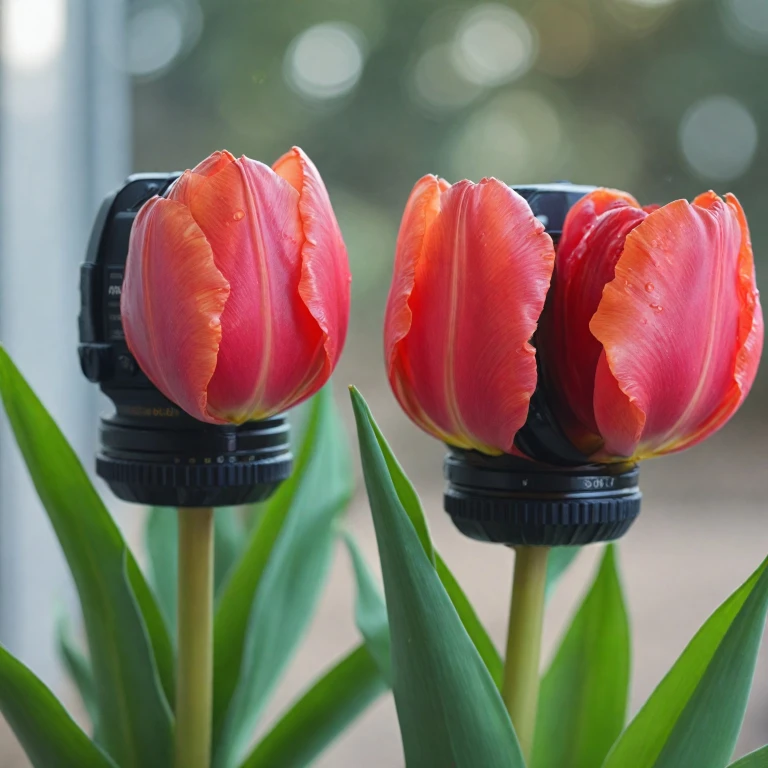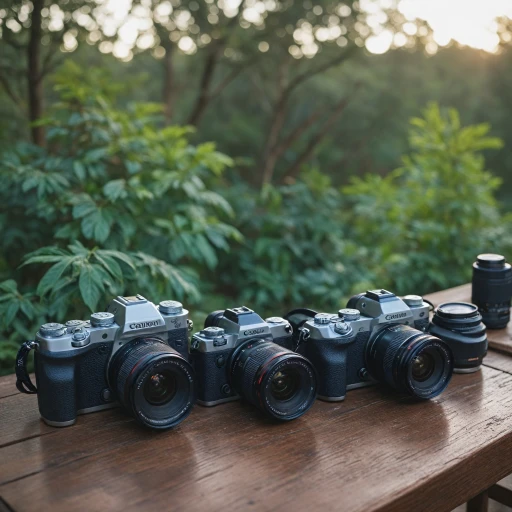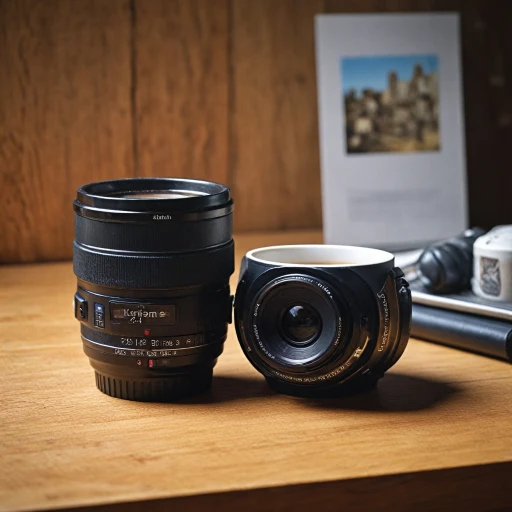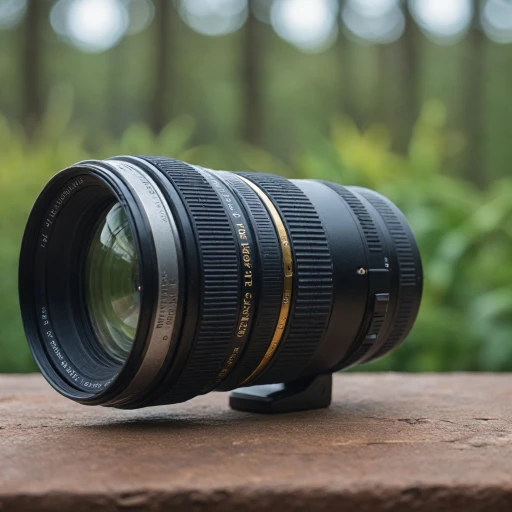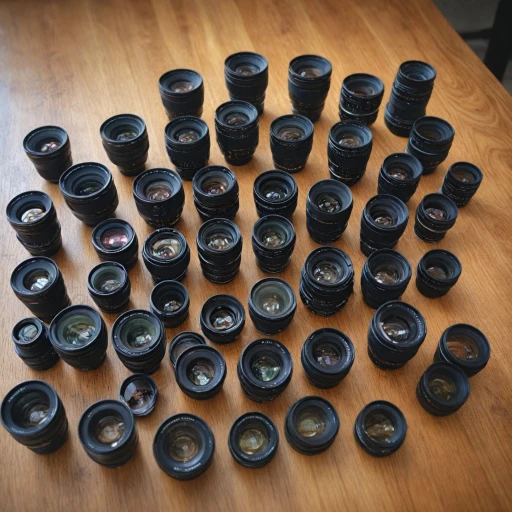
What is a Tulip Lens?
Unveiling the Tulip Lens
In the realm of digital photography, understanding the equipment and its applications can drastically enhance your photo quality. One such tool is the tulip lens, often regarded as an essential component for photographers using camera lenses. So, what is a tulip lens? The tulip lens, named after its tulip-like shape, is a specific type of lens hood crafted to minimize lens flare while capturing images. This lens hood is distinctively petal-shaped and compliments wide-angle lenses by managing light entering from the sides. The unique design of the tulip shape allows for a greater angle of view, compared to other lens hoods, without including the hood in the frame. Purpose and FunctionalityThe primary function of a tulip lens, like other lens hoods, is to prevent stray light from hitting the front lens element, thus reducing lens flare and increasing contrast in photos. This hood will also offer some level of protection for your front lens from potential scratches or impacts. The tulip configuration is particularly beneficial for full-frame cameras and those employing wide-angle or zoom lenses. When shooting in environments with unpredictable or harsh lighting, like outdoors, a tulip lens can effectively shield the lens from unwanted elements. This results in clearer, more vibrant images without the typical glare issues seen in photos taken without such a lens accessory. To deeply dive into the benefits tulip lenses offer in various photography scenarios, explore this essential guide on the RF100-400mm f/5.6-8 IS USM lens, which can be insightful for enthusiasts looking to enhance their image quality in wildlife photography. This guide offers broader insights into lens choices and their impact on capturing stunning visuals. By understanding the role of a tulip lens, photographers are better equipped to maximize their camera potential, pushing the boundaries of what is possible in digital photography.
Exploring Lens Hoods
Delving into the Utility of Lens Hoods
Lens hoods are crucial accessories in digital photography, serving multiple functions that enhance image quality. Typically mounted on the front lens, these hood-like attachments are designed to prevent stray light from entering the lens, reducing the notorious lens flare that can diminish a photo’s contrast and overall quality. The prevention of lens flare is particularly crucial when capturing shots under strong lighting conditions.
Lenses are adept visual artists in the creation of mesmerizing images; however, without adequate protection, both the lens and the resulting image might suffer. A lens hood acts as a safeguard, shielding the front element from accidental impacts or scratches. Additionally, it provides an extra layer of protection against elements like dust or moisture.
Different types of hoods cater to various photography needs. There are petal-shaped and cylindrical designs, each catering to specific focal lengths and photographic requirements. For instance, petal hoods, with their cut-out petal shape, are indispensable for wide angle lenses as they minimize vignetting while effectively reducing unwanted light spillage.
Moreover, lens hoods play a significant role in maintaining image quality, especially when paired appropriately with other photography accessories like filters. By acting as a physical barrier, hoods support filters such as polarizing filters or mist filters, ensuring light is directed straight onto the lens for optimal exposure and balance.
In the context of choosing a hood, it’s paramount to understand your camera lens’s requirements and the specific photography style you wish to achieve. Various lens mounts and adapters allow for different hood integrations, making compatibility a non-issue with the right knowledge, which is detailed in our exploration of the Nikon 500mm.
Comparing Tulip Lenses and Hoods
Evaluating the Distinct Roles and Functions
When diving into the world of digital photography, understanding the roles of a tulip lens and lens hoods is crucial. While both accessories serve the primary intention of enhancing image quality, their functionalities provide diverse advantages, especially when managing lens flare and contrast.- Lenses Shape and Purpose: A tulip lens, characterized by its petal-like design, offers more flexibility when shooting wide-angle photographs. Its unique shape is crafted to reduce vignetting—ensuring that the corners of your photos remain bright and clear. This feature is of particular importance when using full-frame cameras or wide-angle lenses.
- Protection and Light Control: Lens hoods, particularly those designed for specific lens types, are excellent at reducing flare caused by stray light. By shielding the front element of the lens, they not only combat unnecessary light but also offer a physical barrier against accidental impact or scratches. This protective role makes them invaluable for maintaining the longevity of your camera lens.
- Impact on Image Quality: While both are pivotal in managing light, the hood lens primarily focuses on reducing lens flare which can enhance the overall contrast and clarity of your photography. On the other hand, a tulip lens works in conjunction with a lens filter or polarizing filter to further refine the quality of your images by managing the incident light more precisely.
When to Use a Tulip Lens
Embracing the Tulip Lens for Your Photography
When considering the use of a tulip lens in your photography endeavors, it is essential to understand its purpose and ideal scenarios for application. A tulip lens, with its distinct petal-shaped design, is primarily employed to reduce lens flare and enhance image contrast. Here are key scenarios when a tulip lens will serve your photography needs best:- Wide Angle Shots: Tulip lenses are particularly beneficial when dealing with wide angle lenses, as their petal design prevents vignetting, ensuring the entirety of the front element of your lens is exposed to the desired scene without interference.
- Outdoor Photography: When shooting outdoors, you often contend with stray light that can degrade image quality. The tulip lens acts as a barrier, mimicking the effect of a lens hood while maintaining a compact structure, making it ideal for photographers on the move.
- Contrast and Image Quality: Enhancing contrast and protecting against lens flare are crucial for those keen on capturing crisp images. The unique shape helps prevent unwanted light from reaching the filter and front lens, thus preserving the rich details in the photo.
- Dynamic Photography: In scenarios where your photographic subject is dynamic, the tulip lens can offer a versatile solution, adapting to various lighting conditions and angles without the inconvenience of constant adjustments.
When to Opt for a Lens Hood
Optimal Situations for Utilizing Lens Hoods
When working with digital photography, the strategic use of a lens hood, or hood, can significantly elevate your photo quality by combating lens flare and protecting your camera's front element from exposure and potential damage.- Reducing Lens Flare: Ideal for situations where you're working in bright environments or under direct sunlight. Lens flare can create distracting artifacts and reduce contrast, impairing the image quality. A lens hood serves as a physical barrier that prevents stray light from striking the front lens element, thus preserving the photo's integrity.
- Maximizing Contrast: If improved contrast is your goal, attaching a hood to your camera lens is an effective tool. It ensures that unwanted light doesn't seep into the lens, maintaining the vividness of your images.
- Enhancing Image Quality: With a well-designed hood, photography enthusiasts achieve better image quality as it minimizes the risk of flare and glare. This is especially crucial when working without additional lens filters.
- Protection During Outdoor Shoots: A lens hood offers basic physical protection against potential scratches or knock to the front element, which can be especially useful during active outdoor photography sessions.
- Wider Angle Shots: Even when working with wide angle lenses, hoods crafted specifically for wider focal lengths can serve efficiently. This adaptability makes them an essential component in various shooting conditions.
Choosing the Right Accessory for Your Needs
Deciding on the Best Tool for Your Photography
When it comes to selecting the right accessory for your camera, understanding the specific functions and benefits of both tulip lenses and lens hoods can make a significant difference in your photography. Here's a guide to help you determine which option might be best suited to your needs:- Consider Your Shooting Conditions: If you're often shooting in bright or sunny environments, lens hoods can be crucial in preventing lens flare and protecting the front element from stray light. On the other hand, tulip lenses are designed to provide optimum coverage and reduce unwanted light angles, making them ideal for certain wide-angle photography scenarios.
- Assess Your Photography Goals: Are you focused on achieving maximum contrast and image quality? A lens hood might be essential in these cases, particularly when using telephoto or longer focal length lenses. If your objective includes unique photographic effects or you want more flexible framing, exploring tulip lenses could be beneficial.
- Evaluate Additional Accessories: Both lens types can be used in conjunction with various filters like polarizing filters or protection filters. Depending on the lens mount and filter attachments, tulip lenses can sometimes offer more ease of use. However, lens hoods often allow for seamless integration with mist filters and other lens adapters.
- Protect Your Equipment: If you prioritize the protection of your camera lens against bumps and external elements, lens hoods are particularly effective as a protective barrier for the front lens.
- Budget and Versatility: It’s crucial to weigh the cost versus the versatility of each type of accessory. While both types can enhance your photography, you may find that investing in a series of hoods or specific tulip lenses suited for different angles or shooting styles might be more beneficial in the long run.
